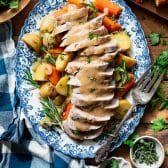Dutch Oven Pork Tenderloin
Pork tenderloin bakes in one pot with carrots, potatoes, and onions. It's all finished with a quick apple cider pan gravy!
Servings 6 people
Ingredients
- 2 pork tenderloins (about 1 – 1 ¼ lbs. each)
- Kosher salt and ground black pepper, to taste
- 1 tablespoon butter
- 2 tablespoons olive oil
- 2 cups chicken broth, divided
- 1 ½ lbs. baby Yukon gold or red potatoes, quartered (or halved if they’re very small)
- 3 carrots, peeled and cut into 2-inch pieces
- 1 large yellow onion, thinly sliced
- 3 large ribs celery, cut into ½-inch crescents
- 2 cloves garlic, minced
- 1 cup apple cider (NOT apple cider vinegar)
- 3 sprigs fresh thyme (or ¼ teaspoon dried)
- 3 sprigs fresh rosemary (or ¼ teaspoon dried)
- 1 bay leaf
Optional Gravy
- 2 tablespoons butter
- 2 tablespoons all-purpose flour
- 1–1 ½ cups of juices/drippings from the pot
Instructions
- Preheat oven to 350°F. Pat the pork dry with paper towels. Season on all sides with salt and pepper.
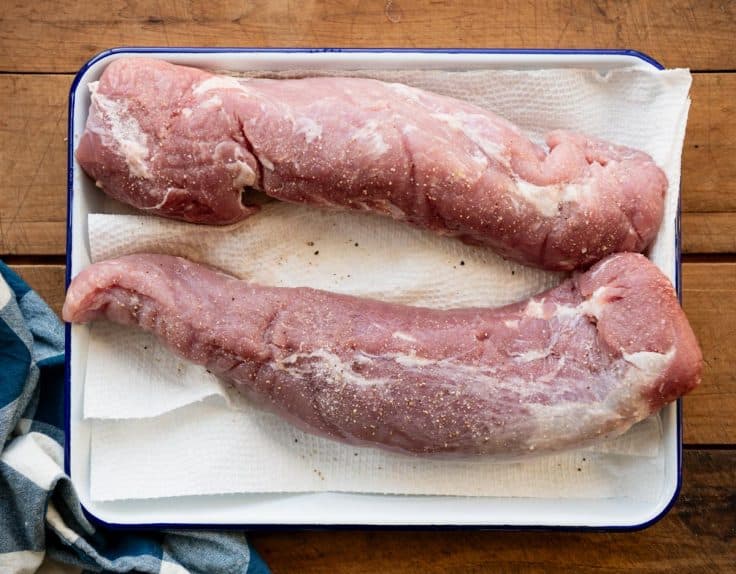
- Heat butter and olive oil in a large Dutch oven over medium-high heat until it is hot but not smoking. Sear the pork on all sides (about 4-6 minutes per side), just until a nice golden-brown color develops and the meat releases easily from the pan. You don’t need to cook the pork all of the way through since it will finish in the oven. Remove to a plate.
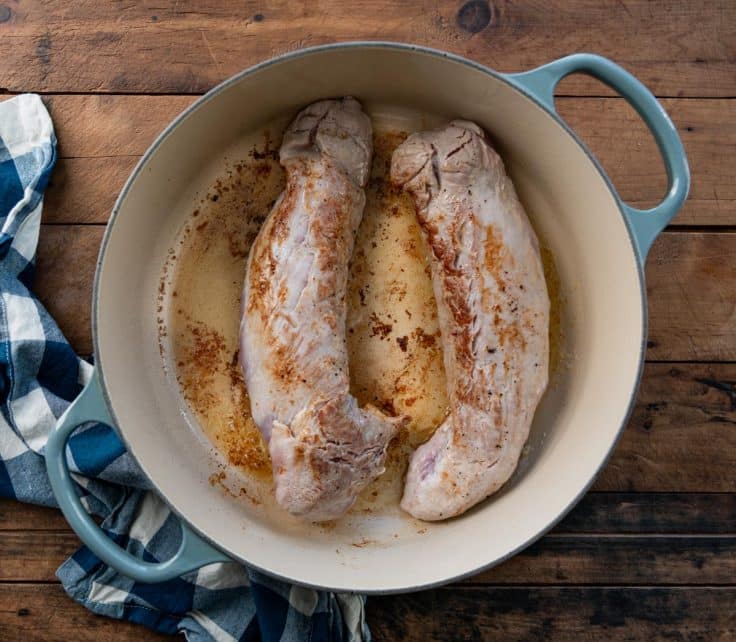
- Reduce the heat to medium and add 1 cup of the chicken broth, scraping with a wooden spoon to deglaze the pan (loosening all of the browned bits from the bottom). Add the potatoes, carrots, onion, celery, and garlic to the pot. Cook, stirring, until the onions are translucent (about 10 minutes). Season with salt and pepper to taste.
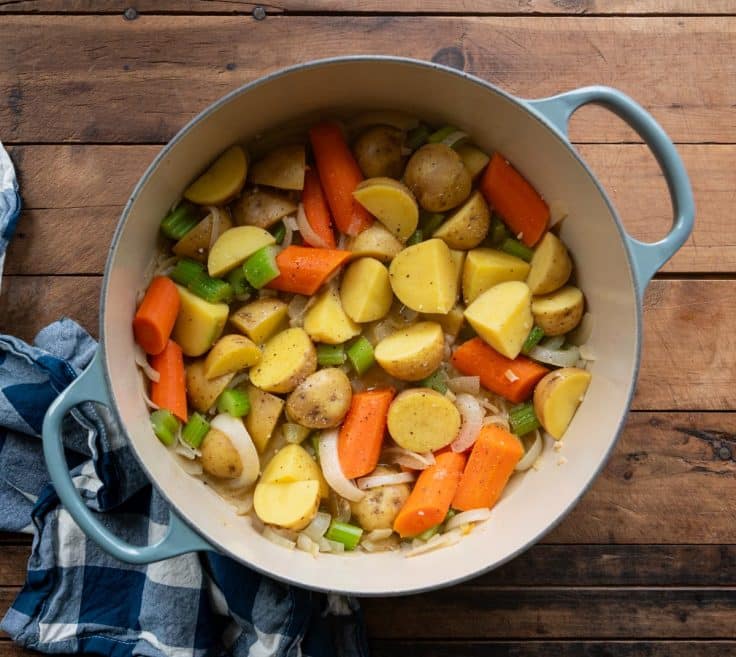
- Place the pork on top of the vegetables. Add the remaining 1 cup of chicken broth, apple cider, thyme, rosemary, and bay leaf. Cover and bake in the 350°F oven until the pork reaches an internal temperature of 145°F, about 20-25 minutes. Remove the pork to a plate; tent with foil.
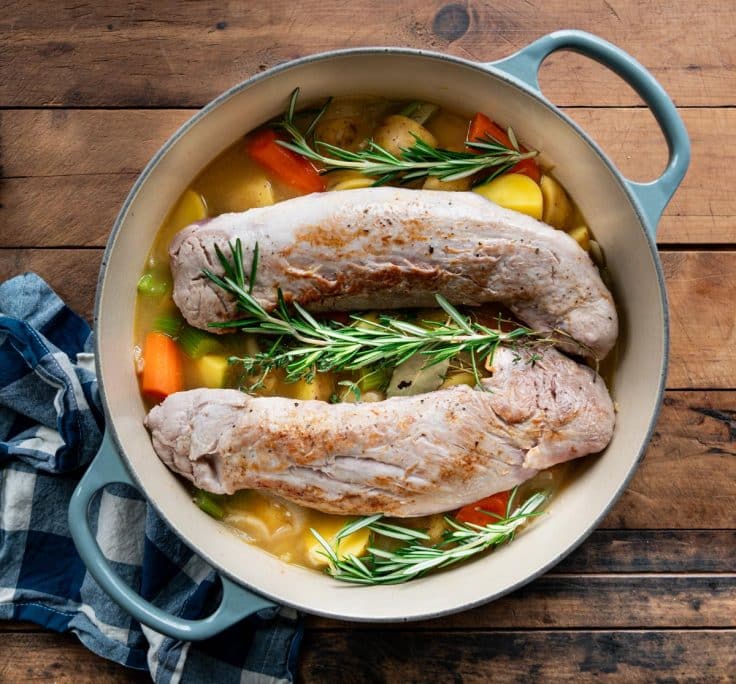
- Increase the oven temperature to 400°F, return the pot to the oven, and continue roasting the vegetables for about 15 more minutes, or until they’re fork-tender. Slice the pork and serve with the vegetables.
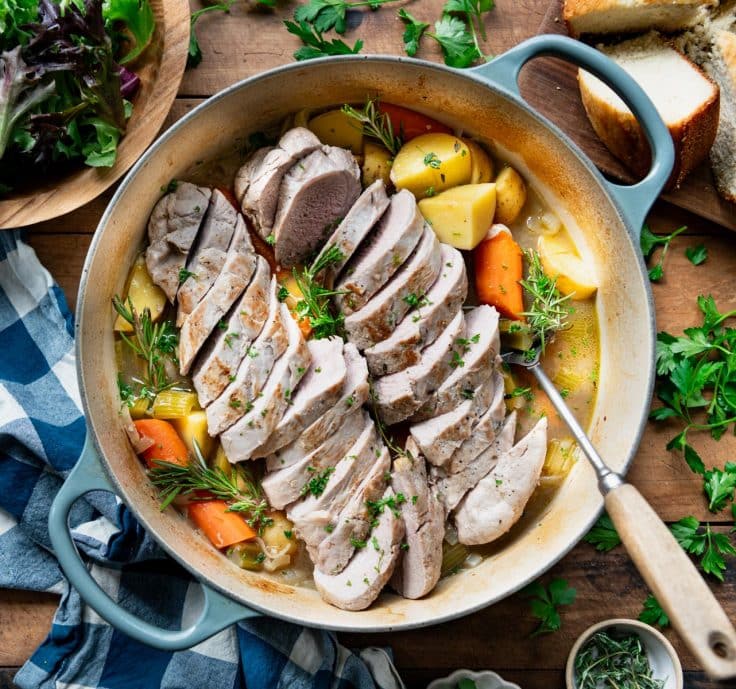
Optional Gravy
- Use a slotted spoon to transfer the vegetables to a serving platter. Place the sliced pork on top and tent with foil to keep warm. Strain the juices and drippings from the pot. Wipe out the pot and use it to make the gravy. Melt the butter in the pot over medium heat until bubbly. Whisk in the flour and cook for 30 seconds. While continually whisking, gradually add the reserved strained juices until the gravy reaches the desired consistency. Continue whisking while the gravy bubbles and cooks for 1-2 minutes. Season with additional salt and pepper, to taste.
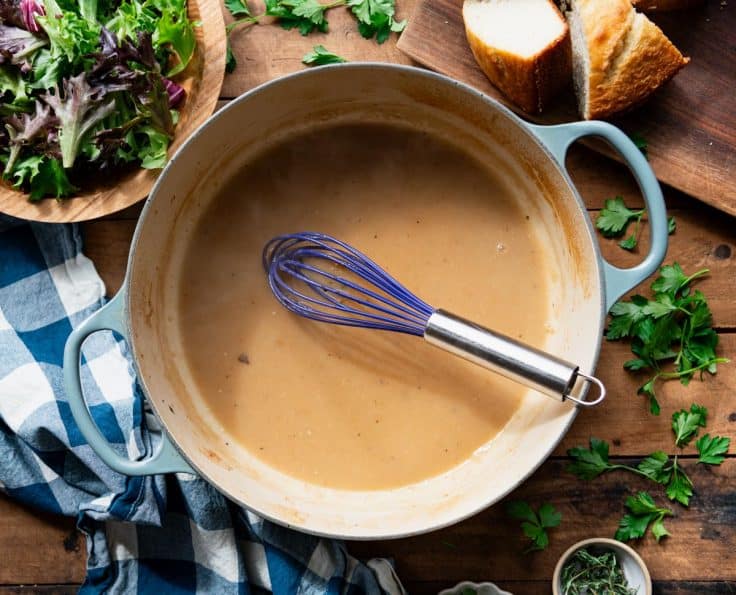
- Spoon or pour the gravy over the pork and vegetables.
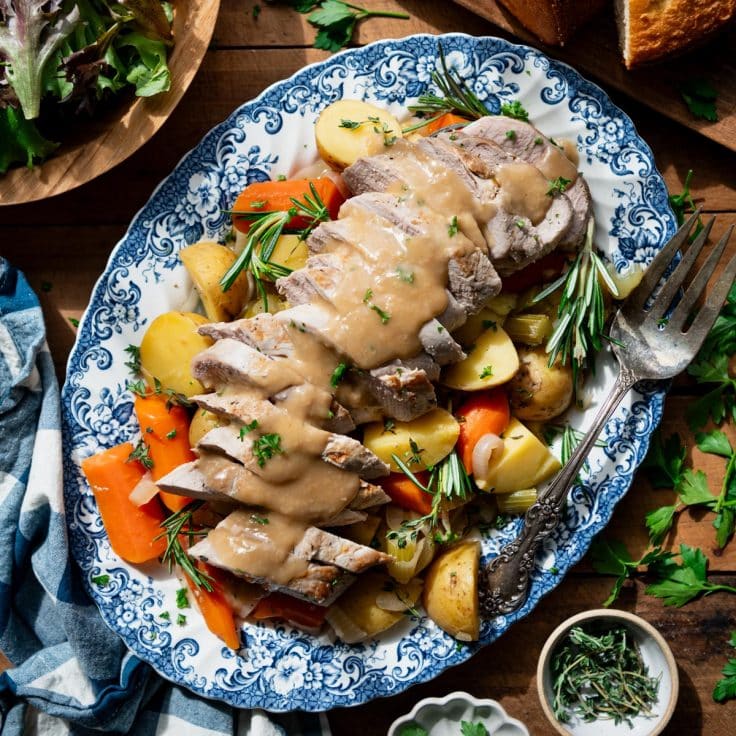
Notes
- Use a wide Dutch oven (if possible) with a capacity of about 6-8 quarts so that it comfortably holds all of the vegetables and meat.
- Use sweet apple cider -- not apple cider vinegar. If you don't have access to apple cider, then apple juice, white wine, or additional chicken broth are all fine substitutes.
- The total cooking time will vary depending on a number of factors, including the thickness of your tenderloin and the temperature of the meat when it goes into the oven. As a result, an instant read thermometer is the best way to know when your pork is perfectly cooked. You're looking for an internal temperature of 140-145˚F. Remember that the temperature will continue to rise as much as 10˚F while it rests, so you can take the meat out of the oven a little bit early to ensure that it doesn't become overdone.
- According to the National Pork Board, it’s perfectly safe to consume medium pork (that’s cooked to about 145°F). At this stage, the pork will have a slight touch of pink in the center and will be at its juiciest!
- Let the meat rest before slicing and serving. You can do this while the vegetables finish in the oven. Resting the pork allows the juices to redistribute, rather than just running onto the cutting board.
